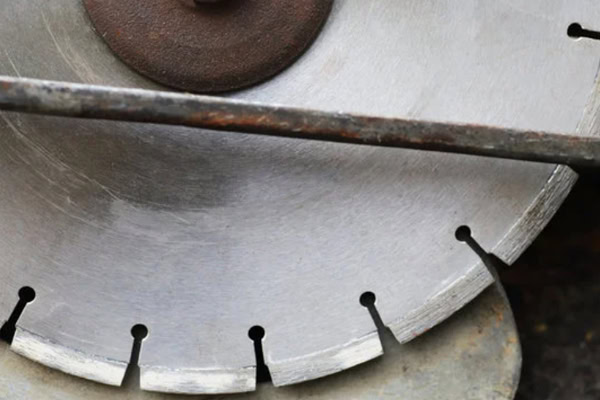
Ever wondered how to keep your diamond blade in top shape? Deglazing might just be the trick you need to extend its life and improve performance.
Deglazing a diamond blade involves cleaning and restoring its surface to ensure optimal cutting efficiency. This process removes any glaze or residue that can dull the blade, allowing it to cut more effectively and last longer. Whether you’re a professional or a DIY enthusiast, knowing how to properly deglaze your diamond blade can make a significant difference in your projects.
Let’s dive into the essentials of diamond blades and how to maintain them effectively.
Elements of Diamond Blades?
What are the key components that make up a diamond blade?
Understanding the elements of a diamond blade is crucial for proper maintenance and effective use.
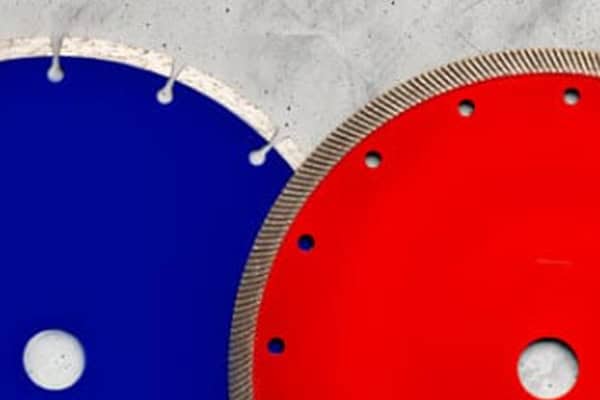
Exploring the Core Components
A diamond blade is a marvel of engineering, combining various elements to achieve superior cutting performance. Here’s a closer look at its main components:
| Component | Description |
|---|---|
| Diamond Segments | These are the actual cutting elements embedded in the blade’s rim. They contain industrial-grade diamonds that grind through hard materials. |
| Bond Material | The metal or resin that holds the diamond segments in place. It affects the blade’s durability and cutting speed. |
| Gasket | Seals the blade, preventing debris from entering and protecting the inner components. |
Each element plays a vital role in the blade’s performance. For instance, the quality of the bond material can determine how well the blade withstands high temperatures and stresses during cutting. Similarly, the design of the gasket can influence the blade’s longevity by keeping it free from contaminants.
The Importance of Each Component
Delving deeper, the diamond segments are the heart of the blade. These segments are embedded with diamonds that provide the cutting power necessary to slice through tough materials. Without high-quality diamonds, the blade would struggle to maintain its effectiveness, leading to frequent replacements and increased costs.
The bond material is equally crucial. It acts as the glue holding the diamonds in place, but it also plays a role in the cooling and lubrication1 during cutting. A strong bond material ensures that the diamonds stay firmly attached, even under intense heat and pressure, preventing premature wear and tear.
Lastly, the gasket is the unsung hero of the diamond blade. By sealing the blade, it prevents dust and debris from infiltrating the inner components, which can cause damage and reduce performance. A high-quality gasket ensures that the blade remains clean and functional, even in the most demanding cutting environments.
Different Types of Diamond Blades?
Which type of diamond blade is right for your specific cutting needs?
Choosing the right diamond blade depends on the material you’re working with and the precision required.
Matching Blades to Materials
Diamond blades come in various types, each tailored for specific applications. Here are the most common types:
| Blade Type | Best For |
|---|---|
| Segmented Blades | Fast cutting of concrete, masonry, and stone. |
| Continuous Rim Blades | Smooth, precise cuts on tiles, glass, and porcelain. |
| Turbo (Cold Press) | For cutting both hard and soft materials with a balance of speed and finish. |
| Ultra Thin (Hot Press) | Precise cutting of tiles, ceramics, and other delicate materials requiring fine edges. |
Selecting the right blade type can make your cutting tasks more efficient and reduce wear and tear on the blade. For example, using a segmented blade for masonry ensures faster cutting speeds, while a continuous rim blade provides cleaner edges on delicate materials like tiles. Turbo blades, which are cold-pressed, offer a great balance between speed and finish, making them versatile for various materials. On the other hand, ultra-thin blades, which are hot-pressed, are specifically designed for precise and fine cutting tasks, making them ideal for materials that require meticulous attention to detail such as tiles and ceramics.
I once tackled a renovation project where using the wrong blade type led to frustrating delays and poor results. Switching to a turbo blade made all the difference, providing the right balance between speed and precision I needed for the job. It was a game-changer, transforming what could have been a tedious process into a smooth and efficient workflow.
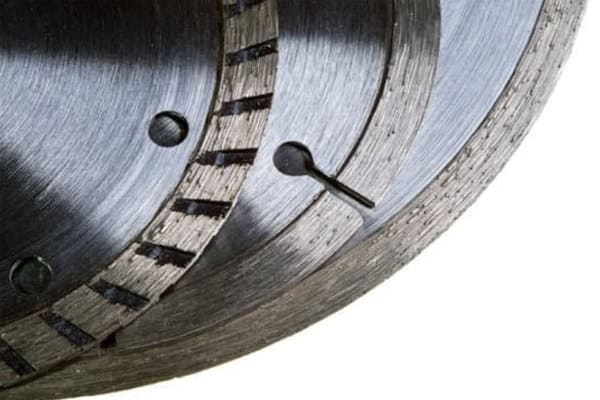
Segmented Blades: Power and Efficiency
Segmented blades are your go-to choice when you need to cut through hard, dense materials quickly. These blades have a series of gaps or segments around the rim, which allows for better cooling and debris removal. The design ensures that the blade can maintain high cutting speeds without overheating, making it ideal for large-scale projects like cutting concrete slabs or stone countertops.
However, segmented blades are not the best choice for materials that require a smooth finish. The gaps can cause the blade to produce a rougher edge, which might not be suitable for delicate tasks. Despite this, their efficiency and durability make them a favorite among professionals who prioritize speed and power.
Continuous Rim Blades: Precision at Its Best
When precision is paramount, continuous rim blades are unmatched. Unlike segmented blades, continuous rim blades have a smooth, uninterrupted edge, which ensures a clean and precise cut. This makes them perfect for cutting materials like porcelain tiles2, and ceramic where a flawless finish is essential.
The absence of segments means there’s no space for debris to accumulate, reducing the risk of chipping or cracking the material being cut. However, continuous rim blades can wear out faster when used on very hard materials compared to segmented blades. It’s a trade-off between precision and durability, but for tasks requiring meticulous attention to detail, continuous rim blades are the clear winner.
Turbo (Cold Press) Blades
Turbo blades strike a perfect balance between segmented and continuous rim blades. They are designed to handle a variety of materials, offering both speed and a decent finish. The cold press technology used in turbo blades ensures that the diamonds are set firmly, providing consistent performance across different applications.
Ultra Thin (Hot Press) Blades: Precision Meets Delicacy
Ultra-thin blades are engineered for precise and fine cutting tasks. The hot press technology used in their manufacturing process results in blades that are thinner yet stronger, allowing for more accurate cuts on delicate materials like tiles and ceramics. Their enhanced precision means they can create clean, sharp edges without damaging the material, making them ideal for intricate tile work, ceramic installations, and other projects that require meticulous attention to detail.
These blades are perfect for projects that demand both strength and accuracy, such as custom tile mosaics or intricate ceramic designs. While they might be slightly more expensive than other types, their ability to deliver precise cuts without compromising on durability makes them a cost-effective choice in the long run, especially for tasks that require high levels of precision.
Can you Put a Diamond Blade on a Circular Saw?
Is it possible and safe to use a diamond blade with a circular saw?
Yes, you can use a diamond blade on a circular saw, provided you follow the correct procedures and safety guidelines.
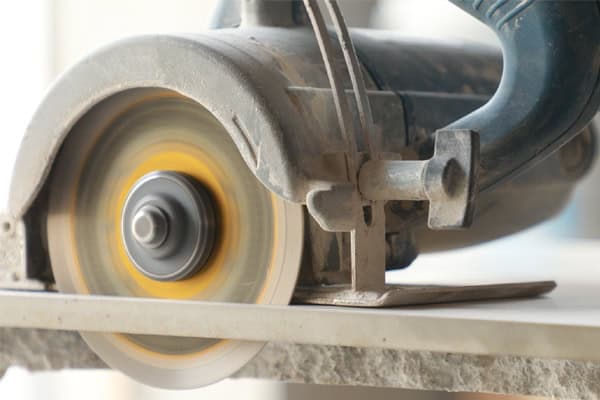
Ensuring Compatibility and Safety
Using a diamond blade with a circular saw requires careful consideration of compatibility and safety measures. Here’s what you need to keep in mind:
- Saw Compatibility: Not all circular saws are designed to handle diamond blades. Ensure your saw can support the blade’s size and weight.
- Proper Installation: Follow the manufacturer’s instructions for mounting the blade securely to prevent accidents.
- Safety Gear: Always wear appropriate protective equipment, such as gloves, safety glasses, and hearing protection.
- Cutting Speed: Adjust the saw’s speed settings to match the requirements of the diamond blade for optimal performance.
In my experience, switching to a diamond blade on a circular saw opened up new possibilities for cutting harder materials with ease. However, it was crucial to invest time in understanding the blade’s requirements and adapting my equipment accordingly. This not only ensured safety but also enhanced the quality of my work.
Choosing the Right Circular Saw
Not all circular saws are created equal, and not all are suitable for diamond blades. When selecting a saw, look for models that are specifically designed to handle the increased weight and unique balance of diamond blades. Features such as adjustable speed settings and reinforced mounts can make a significant difference in performance and safety.
For instance, a saw with variable speed control allows you to adjust the cutting speed based on the material and blade type, ensuring optimal performance and reducing the risk of overheating. Additionally, saws with sturdy frames and secure blade mounts provide better stability, minimizing vibrations and enhancing cutting precision.
Installation Tips
Proper installation is paramount. Ensure the blade is securely fastened to prevent wobbling or detachment during use. This involves carefully aligning the blade with the saw’s arbor and tightening all bolts and screws3 to the manufacturer’s specifications. A loose blade can lead to uneven cuts and pose serious safety risks.
Before installation, inspect the blade for any damage or defects. A damaged blade should never be used, as it can compromise cutting performance and safety. Additionally, ensure that the saw’s blade guard is functioning correctly and that all safety features are in place and operational.
Personal Safety Practices
Safety cannot be overstated when working with diamond blades. Always use protective gear to shield yourself from flying debris and loud noises. It’s also wise to work in a well-ventilated area to avoid inhaling dust particles generated during cutting. Taking these precautions ensures a safe and efficient working environment.
Moreover, always keep your hands and body parts away from the blade’s path. Using clamps or guides to hold the material securely can prevent accidental slips and ensure more accurate cuts. Additionally, take regular breaks to avoid fatigue, which can lead to mistakes and accidents.
Maintenance Tips for Longevity
To maximize the lifespan of your diamond blade when used with a circular saw, consider the following maintenance tips:
- Regular Cleaning: After each use, clean the blade to remove debris and prevent buildup.
- Proper Storage: Store the blade in a dry, safe place to avoid damage and corrosion.
- Periodic Inspection: Check for signs of wear or damage before each use to ensure the blade remains in good condition.
- Sharpening: Depending on usage, periodically sharpen the blade to maintain its cutting efficiency.
By incorporating these maintenance practices, you can ensure that your diamond blade remains effective and safe for numerous cutting tasks.
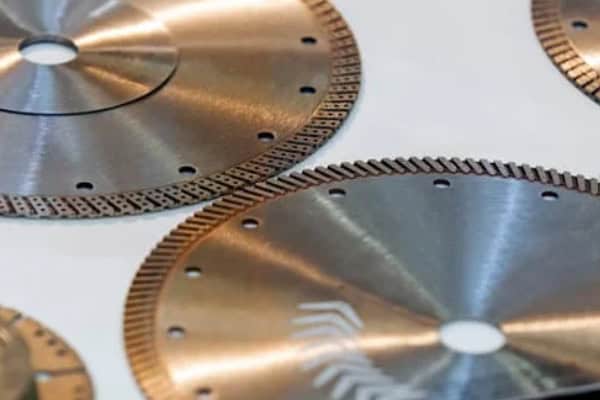
Cleaning Your Blade
Cleaning is a simple yet essential part of blade maintenance. Use a soft brush or compressed air to remove dust and debris from the blade’s surface. For stubborn residues, a mild detergent and water solution can be used, but ensure the blade is thoroughly dried before storage to prevent rust and corrosion.
Avoid using abrasive materials or harsh chemicals that can damage the blade. Additionally, inspect the blade for any signs of buildup that might affect cutting performance and address them promptly to maintain optimal efficiency.
Storage Best Practices
Proper storage extends the life of your diamond blade. Store it in a protective case or wrap it in a soft cloth to prevent scratches and dents. Keeping the blade dry is crucial.
Consider labeling your blades with their type and intended use to prevent accidental misuse. Storing blades separately based on their application can also help in organizing your tools and ensuring that you always have the right blade for the job at hand.
Regular Inspections
Before each use, take a moment to inspect the blade for any signs of wear or damage. Look for missing or loose diamond segments, cracks in the bond material, or any other irregularities. Identifying issues early can prevent accidents and ensure that your blade performs optimally.
Pay special attention to the blade’s rim and edges, as these areas are most susceptible to wear. Additionally, check the mounting area on your saw to ensure that the blade is secure and that there are no loose parts that could affect cutting performance or safety.
Sharpening Techniques
Over time, even the best blades will dull. Sharpening involves removing the top layer of the bond material to expose fresh diamonds, restoring the blade’s cutting efficiency. While some blades can be sharpened at home with the right tools, others might require professional servicing to maintain their integrity and performance.
For home sharpening, use a diamond blade sharpener or a flat abrasive surface to gently grind the bond material. Ensure that you follow the manufacturer’s guidelines to avoid over-sharpening, which can compromise the blade’s structure and performance. Regular sharpening can significantly extend the blade’s lifespan and maintain its cutting efficiency.
What Really Makes a Great Diamond Blade?
What factors contribute to the performance and durability of a top-notch diamond blade?
Several key factors determine the quality and effectiveness of a diamond blade, impacting both its performance and longevity.
Key Quality Indicators
When selecting a diamond blade, consider the following aspects to ensure you’re getting a great product:
- Diamond Quality: High-quality, industrial-grade diamonds provide better cutting performance and longer blade life.
- Blade Design: Features like blade thickness, segment size, and gasket design influence the blade’s cutting ability and durability.
- Manufacturer Reputation: Opting for blades from reputable manufacturers can guarantee better quality control and customer support.
In my journey of using various diamond blades, I’ve found that the blade’s bond strength plays a significant role in its overall performance. A strong bond not only holds the diamonds firmly but also allows the blade to shed debris effectively, preventing clogging and overheating during cutting.
Diamond Quality
The quality of the diamonds embedded in the blade is paramount. Industrial-grade diamonds, which are synthetic and uniformly shaped, offer consistent performance and longer lifespan compared to natural diamonds. These diamonds are engineered to withstand the high pressures and temperatures encountered during cutting, ensuring they remain sharp and effective over extended use.
High-quality diamonds provide a more efficient cutting action, reducing the effort required and minimizing wear on both the blade and the saw. They also contribute to smoother cuts, enhancing the overall quality of your work.
Blade Design and Engineering
The design of the blade, including its thickness, segment size, and overall geometry, significantly affects its performance. Thinner blades can offer more precise cuts, but they might be less durable under heavy use. Segment size plays a role in how quickly debris is cleared from the cutting path, impacting both speed and finish quality. A well-engineered blade balances these factors to deliver consistent and reliable performance across various tasks.
Advanced engineering techniques, such as optimizing the spacing and shape of segments, can enhance both cutting efficiency and durability. Innovations in blade design continue to push the boundaries, offering blades that perform better and last longer in demanding applications.
Heat Dissipation
Effective heat dissipation is another critical aspect of blade design. Excessive heat can degrade the bond material and cause premature wear of the diamonds. Blades designed with proper cooling channels4 and ventilation systems help manage heat buildup, ensuring the blade remains cool and effective during prolonged use.
Incorporating heat-resistant materials and innovative cooling technologies can significantly extend the blade’s lifespan, reducing the need for frequent replacements and maintenance.
Vibration Reduction
Minimizing vibrations during cutting not only improves the quality of the cut but also enhances safety and user comfort. Advanced blade designs incorporate features that reduce vibration, leading to smoother operation and less fatigue for the user.
Balancing the blade’s weight distribution and optimizing its structural integrity can effectively reduce vibrations, making the cutting process more efficient and less strenuous.
Manufacturer Reputation and Warranty
Choosing a blade from a reputable manufacturer ensures that you’re getting a product that has undergone rigorous quality control and testing. Established brands often offer comprehensive warranties, reflecting their confidence in the blade’s performance and durability. Additionally, reputable manufacturers provide better customer support, making it easier to address any issues or concerns that may arise.
Innovation and Research
Leading manufacturers invest in research and development to innovate and improve blade technology continually. This commitment to innovation results in blades that offer better performance, longer lifespan, and enhanced safety features, providing users with the best possible tools for their projects.
Collaborations with industry experts and continuous testing under various conditions help manufacturers refine their products, ensuring they meet the evolving needs of professionals and DIY enthusiasts alike.
Performance and Durability
A great diamond blade should offer a balance between cutting speed and durability. Here’s how to evaluate these factors:
- Cutting Speed: Faster cutting speeds can save time, especially on large projects, but ensure the blade can handle the increased demand without excessive wear.
- Durability: A durable blade withstands more cuts before needing replacement, providing better value in the long run.
- Heat Resistance: Good heat resistance prevents the blade from degrading quickly under high temperatures generated during cutting.
- Flexibility: Some blades offer flexibility for intricate cuts, while others are optimized for straight, heavy-duty cutting.
Selecting a blade that aligns with your specific needs ensures that you achieve the best results while maintaining efficiency and cost-effectiveness.
Balancing Speed and Longevity
While high cutting speed is desirable, it’s essential to ensure that the blade can sustain this performance without compromising its lifespan. Blades that wear out too quickly might seem cost-effective initially but can lead to increased expenses and downtime in the long run. Investing in a blade that offers both speed and durability ensures consistent performance and reduces the frequency of replacements.
Heat Management
Effective heat management is crucial for maintaining blade integrity. Blades that can dissipate heat efficiently prevent the bond material from weakening and the diamonds from losing their sharpness. This not only prolongs the blade’s life but also ensures safer and more reliable operation.
Incorporating heat-resistant alloys and innovative cooling channel designs can significantly enhance a blade’s ability to manage heat, ensuring it remains effective even during prolonged cutting sessions.
Real-World Applications and User Experiences
Understanding how different blades perform in real-world scenarios can provide valuable insights into their effectiveness and reliability. Here are some examples from my personal experience and observations:
Construction Projects
In large-scale construction projects, segmented and turbo blades are often the preferred choice due to their ability to cut through concrete, masonry, and stone efficiently. The segmented design allows for rapid cutting and effective debris removal, which is crucial in busy work environments where time is of the essence.
During a recent construction project, we needed to cut through reinforced concrete for installing new plumbing systems. Using a high-quality segmented blade significantly reduced the cutting time and minimized the wear on the blade, allowing us to complete the task faster and more efficiently than anticipated. The blade’s ability to handle heavy-duty cuts without overheating was a game-changer, enhancing overall productivity.
Renovation and Remodeling
For renovation projects that involve working with tiles, glass, and other delicate materials, continuous rim blades are indispensable. Their ability to provide smooth, precise cuts ensures that the finished work looks professional and meets aesthetic standards.
I recall a kitchen remodeling project where precise tile cuts were essential for fitting around appliances and fixtures. A continuous rim blade delivered clean edges without chipping the tiles, resulting in a flawless and visually appealing finish. The blade’s precision allowed for intricate patterns and seamless installations, elevating the overall quality of the renovation.
DIY and Home Improvement
For DIY enthusiasts tackling various projects around the house, turbo blades offer the versatility needed to handle different materials without constantly switching blades. Whether it’s cutting through drywall, metal, or wood, turbo blades provide a reliable balance of speed and finish quality.
One of my favorite DIY projects involved building custom shelving units from reinforced concrete blocks. Using a turbo blade allowed me to cut the blocks quickly while maintaining the necessary precision to fit them perfectly into the designated spaces, making the project both manageable and satisfying. The blade’s adaptability made it possible to tackle multiple aspects of the project without the hassle of switching between different blades.
Specialized Cutting Tasks
Ultra-thin blades are perfect for specialized cutting tasks that require both durability and precision. Their ability to handle tough materials like granite and reinforced concrete makes them ideal for intricate stonework and heavy-duty construction tasks.
In a project involving the installation of granite countertops, an ultra-thin blade provided the precision needed to create clean, accurate cuts without damaging the stone. The blade’s durability also meant it could handle the demanding cutting process without frequent replacements, ensuring a smooth workflow. The ability to achieve both precision and strength made ultra-thin blades invaluable for high-end finishing tasks that demand meticulous attention to detail.
Troubleshooting Common Issues
Even with the best blades, occasional issues can arise. Understanding how to troubleshoot these problems can help maintain performance and extend the blade’s lifespan.
Blade Clogging
One common issue is blade clogging, where debris accumulates on the blade’s surface, hindering its cutting efficiency. This can be caused by cutting materials that produce a lot of dust or fine particles.
Solution: Regular cleaning during and after use can prevent clogging. Using blades with better debris removal systems, such as segmented blades, can also help maintain cutting efficiency. Additionally, incorporating water cooling can reduce the amount of dust generated and keep the blade cleaner during use.
Uneven Cutting
Uneven cutting can occur due to improper installation or blade imbalance. This not only affects the quality of the cut but can also pose safety risks.
Solution: Ensure the blade is installed correctly and securely. Regularly inspect the blade for signs of imbalance or damage and replace it if necessary to maintain even cutting performance. Balancing the blade and ensuring that the saw is properly calibrated can also help prevent uneven cuts.
Excessive Heat
Excessive heat is often caused by high cutting speeds or prolonged use without adequate cooling.
Solution: Adjust the cutting speed to match the blade’s specifications and allow the blade to cool between cuts. Using blades designed for better heat dissipation can also mitigate this issue. Incorporating cooling techniques, such as water spraying or using cooling gels, can help manage heat buildup and extend the blade’s life.
Vibration and Noise
Excessive vibration and noise during cutting can indicate issues with blade balance or wear.
Solution: Inspect the blade for any signs of wear or damage and replace it if necessary. Ensuring the blade is properly balanced and securely mounted can reduce vibrations and noise, enhancing both performance and safety. Using vibration dampening accessories or upgrading to a saw with better vibration control can also help minimize this issue.
Conclusion
Deglazing your diamond blade is a simple yet effective way to enhance its performance and lifespan. Keep your tools sharp and your projects smooth!
-
Insights into the role of cooling and lubrication in maintaining tool performance and preventing damage or overheating, are essential for users looking to improve efficiency and tool longevity. ↩
-
Porcelain tiles require special care during cutting, and continuous rim blades are often recommended. ↩
-
Tightening bolts and screws correctly is crucial for safety and performance. Understand how to properly tighten the hardware to avoid any issues like loose blades. ↩
-
Cooling channels are integral to managing heat in cutting blades. Explore how these features help to prolong the blade’s lifespan by maintaining optimal operating temperatures. ↩